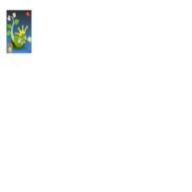三腳扁插蘇的英文名稱
2008-01-17 7:23 am
想問有無人知道"三腳扁插蘇" 的英文名稱??
回答 (1)
2008-01-17 7:55 am
✔ 最佳答案
有兩種,一種平(美式),一種斜(澳洲式),你自己對住睇啦.Type B (American 3-pin or U-ground)
圖片參考:http://upload.wikimedia.org/wikipedia/en/thumb/5/5b/Domestic_AC_Type_B_USA.jpg/120px-Domestic_AC_Type_B_USA.jpg
A North American grounded (earthed) plug. Note that the socket will also accept an ungrounded (two prong) plug whether polarized or unpolarized.
NEMA 5-15 (North American 15 A/125 V grounded)
圖片參考:http://upload.wikimedia.org/wikipedia/en/thumb/6/67/P2050397.JPG/100px-P2050397.JPG
A more common style of NEMA 5-15 duplex outlet, with metal wallplate.
The type B plug has two flat parallel blades like type A, but has a round ground or earthing pin (American standard NEMA 5-15/Canadian standard CSA 22.2, N°42).[7] It is rated for 15 amperes at 125 volts. The ground pin is longer than the live and neutral blades, so the device is grounded before the power is connected. The neutral blade in the type B socket is wider than the live one to prevent polarized type A plugs being inserted upside-down. Type B plugs often have both pins narrow since the ground pin enforces polarity.
The 5-15 socket is standard in all of North America (Canada, the United States and Mexico). It is also used in Central America, the Caribbean, northern South America (Colombia, Ecuador, Venezuela and part of Brazil), Japan, Taiwan and Saudi Arabia.
With type B outlets, if you look directly at the outlet with the ground at the bottom, the neutral slot is on the left, and the live slot is on the right. They may also be installed with the ground at the top or on either side, but the pinout going clockwise, starting with the ground, are always ground, neutral, live. If the plug is polarized, the widest pin is the neutral connector.
In the theater, this connector is sometimes known as PBG for "Parallel Blade with Ground", or Hubbell the name of a common manufacturer.
JIS C 8303, Class I (Japanese 15 A/100 V grounded)
Japan also uses a Type B plug similar to the North American one.[8] However it is less common than its Type A equivalent.
Type I (Australian/New Zealand & Chinese/Argentine 2/3-pin)
圖片參考:http://upload.wikimedia.org/wikipedia/en/7/7a/Australian_dual_switched_power_point.jpg
Australian switched 3-pin dual power point (socket)
AS 3112 (Australian 10 A/240 V)
This plug, used in Australia, New Zealand, Fiji and Papua New Guinea, has an earthing pin, and two flat pins forming an upside down V-shape.[13] The flat blades measure 6.5 × 1.6 mm and are set at 30° to the vertical at a nominal pitch of 13.7 mm. Australasian wall sockets almost always have switches on them for extra safety, as in the UK. An unearthed version of this plug with two angled power pins but no earthing pin is used with small double-insulated appliances, but the power (wall) outlets always have three pins, including an earth pin.
There are several AS/NZS 3112 plug variants,[14] including one with a wider earth pin used for devices drawing up to 15 A; sockets supporting this pin will also accept 10 A plugs. There is also a 20 A variant, with all three pins oversized, and 25 and 32 A variants, with the 20 A larger pins and the earthing pin forming an inverted "L" for the 25 A and a horizontal "U" for the 32 A (the 5 variants {10; 15; 20; 25 & 32 ampere sockets} will accommodate all the plugs that are equal or of a lesser current carrying capacity, but not a higher value; i.e. a 10 A plug will be accommodated by all sockets but a 20 A plug will fit only 20, 25 and 32 A outlets).
Australia's standard plug/socket system was originally codified as standard C112 (floated provisionally in 1937, and adopted as a formal standard in 1938), which was superseded by AS 3112 in 1990. As of 2005, the latest major update is AS/NZS 3112:2004, which mandated insulated pins[15] by 2005. However, equipment and cords made before 2003 can still be used.
參考: 個人知識+維基百科
收錄日期: 2021-04-26 21:15:30
原文連結 [永久失效]:
https://hk.answers.yahoo.com/question/index?qid=20080116000051KK04443

